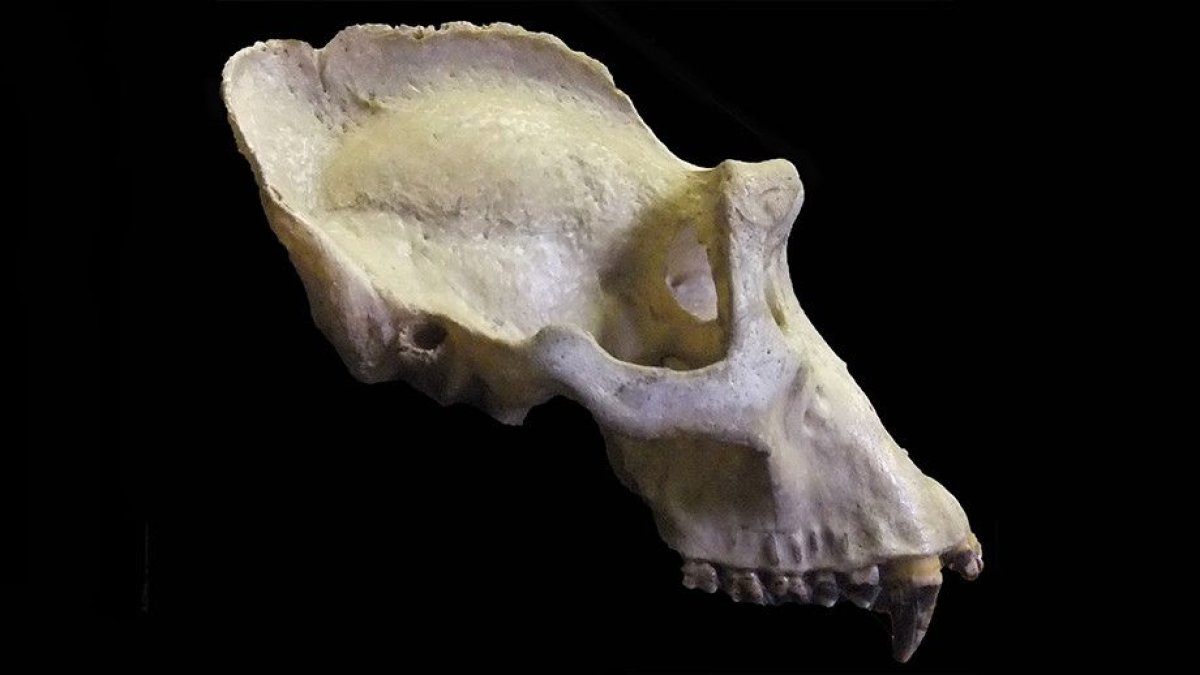
By analyzing the skulls of male gorillas and orangutans, scientists are learning about the social structures created by our extinct hominin relatives. Researchers claim the crest-shaped bony ridge seen in some species' skulls could be the result of sexual selection—and identifying similar crests in our early ancestors could reveal on how they interacted, especially when it came to social hierarchies and mate selection.
In a study published in the Journal of Anatomy in April, researchers led by Katharine Balolia, from the Australian National University, examined the sagittal crests—a bony arch at the top of the skull—of great apes and gibbons.
Modern humans do not have sagittal crests because we do not have to chew tough foods like apes do or our ancestors did. While our jaw muscles end just below the ear, in a species with a sagittal crest they would extend all the way up, giving them the extra power they need to eat.
But the researchers say this is not the whole story. In their study, the team analyzed 3D scans of the skulls of four ape species. They looked at the size of the crest and compared it to dental maturity and at what stage in life the crest develops. They also looked at both males and females to see if there was a difference between the sexes.
Their findings showed that in male gorillas and orangutans, the need for larger chewing muscles alone could not explain crest formation. In most male gorillas, the crest emerges in early adulthood, while any females with one seemed to develop it more gradually. In Bornean orangutans, males get their crest in mid-adulthood during a secondary growth spurt.
The team argues that the timing of the emergence of the crest—when the species reaches sexual maturity—supports the sexual selection hypothesis, where a trait evolves because of a preference for certain characteristics. Researchers also showed that female gorillas prefer males with larger crests.
"In terms of gorilla social structures, the males establish dominance shortly after their wisdom teeth emerge. We found the sagittal crest appears right after their wisdom teeth emerge, so that fits in with the timing of social dominance," Balolia said in a statement. "In contrast, in orangutans some males only become dominant quite late in their adult life, and the sagittal crest appears later."
They team says that while their findings support the hypothesis that sexual selection plays a role in their formation, "to what extent sagittal crests may serve a direct function in social signaling" is unclear.
However, they believe the findings could shed light on the social structures of extinct hominin species. Some hominin species also have sagittal crests. These include Paranthropus robustus , Paranthropus boisei, Paranthropus aethiopicus and Australopithecus afarensis.
They scientists said if the timing of crest development is associated with "intense intrasexual competition" among male primates (where members of the same sex compete for mates), we could look back to the fossil record to see if a similar picture emerges among our extinct ancestors that also had sagittal crests.
They concluded: "These findings raise the possibility that sagittal cresting in fossil hominin taxa may have been driven by both diet-related factors and sexual selection," adding that sagittal crests "may provide some insight into sociality in the extinct hominin taxa in which they do occur."
Balolia said: "If sagittal crest size and social behaviour are linked in this way, then we could potentially establish that some of our extinct human relatives had a gorilla-like social system. This would be a first, because otherwise the human fossil record provides precious little about how our extinct relatives chose their mates."
Commenting on the study, James Cole, senior lecturer in archaeology at the University of Brighton, said the findings are "extremely useful in highlighting the possibility that the formation of sagittal crests may go beyond a function of diet."
"This study shows that perhaps the role of sexual selection is more than we previously thought [in relation to sagittal crests]," he tells Newsweek. "If we can then relate that to ancient human species…What this paper shows is the sagittal crest might also play a role in how those hominins are developing social structures that can then be linked to biology beyond diet."
He says where you have large sexual dimorphism (a difference between the appearance of males and females) primate data shows, "you're probably going to have male-male competition for access to females."

He said if the sagittal crest relates to sexual selection in hominins too, then you may well see a similar social structure emerge: "So you may be looking at dominant males, accessing a large group of females. It's a polygynous reproductive strategy rather than a monogamous one."
In terms of further research, Cole said the lack of fossils will hamper results. "But if we found more examples of hominin fossils that had these crests then this approach would be helpful in understanding how these ancient hominins structured their societies and engaged with each other," he says.
In an email interview with Newsweek, María Martinón-Torres, lecturer in paleoanthropology at UCL, says the study is solid with an impressive amount of data: "It is important because sagittal crest is a trait that paleontologists have classically employed to identify and distinguish between different primates species, what we call taxonomy. In some cases the expression of sagittal crests was also used to infer the masticatory habits [chewing habits] of a given group on the basis that species with powerful masticatory needs would need an increased area of attachment of the masticatory muscles, and the sagittal crest was a way to increase the muscle anchor area.
"However, this study shows support to a third possibility, that sagittal crests may have indeed a function in sexual selection, related in many aspects with intra-sexual male competition or sexual signalling. Overall, it warns us, paleontologists, about the use of sagittal crests to characterize and classify species and look at it as a more plastic feature that may reflect some social pressure and need of competition for a successful mating."
Uncommon Knowledge
Newsweek is committed to challenging conventional wisdom and finding connections in the search for common ground.
Newsweek is committed to challenging conventional wisdom and finding connections in the search for common ground.
About the writer
Hannah Osborne is Nesweek's Science Editor, based in London, UK. Hannah joined Newsweek in 2017 from IBTimes UK. She is ... Read more
To read how Newsweek uses AI as a newsroom tool, Click here.








